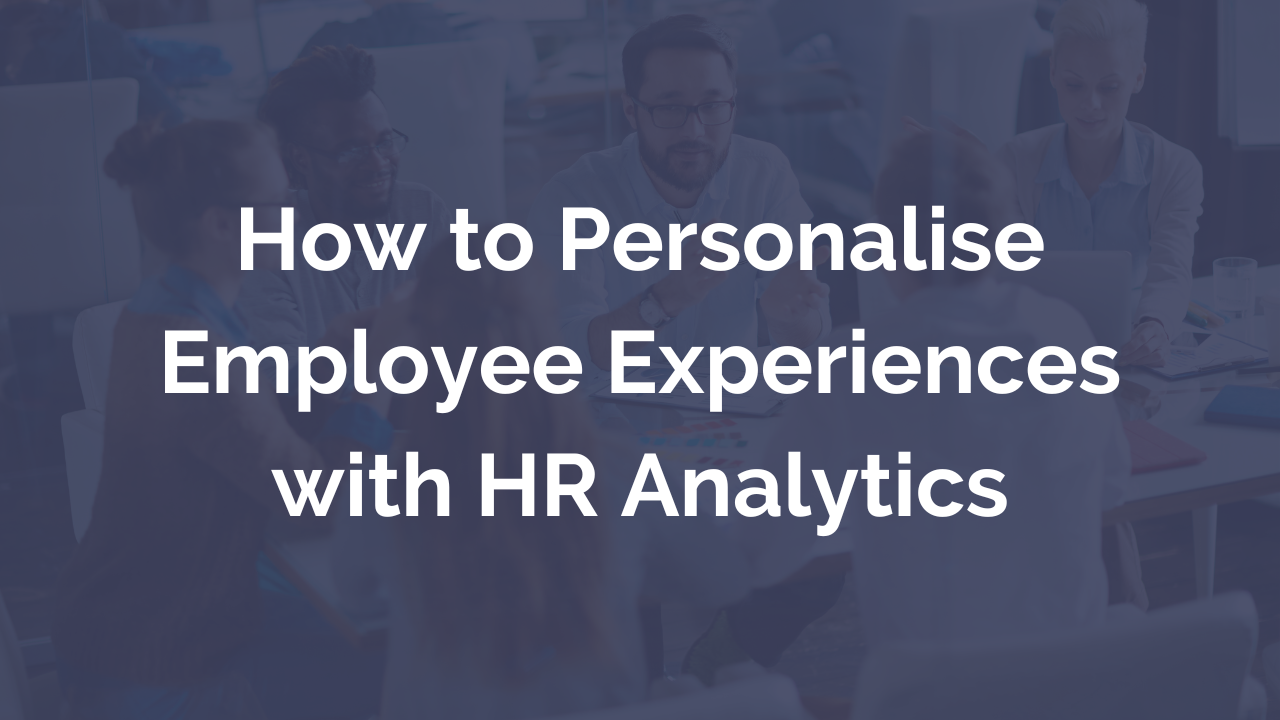The pursuit of an outstanding employee experience (EX) has become more than a mere buzzword; it's an organisational imperative echoing through the corridors of businesses worldwide. While the dialogue surrounding ‘better EX’ is omnipresent, suggesting a universal stride towards enriching workplace dynamics, there's a need to pause and reflect: Are these discussions translating into disciplined action and tangible improvements?
Read MoreIn today's ever-evolving workplace, understanding and catering to the unique needs and preferences of each employee is not just a nice-to-have; it's a strategic imperative. Human Resource (HR) leaders are pivotal in driving this personalised approach, leveraging HR analytics to tailor employee experiences (EX) that not only resonate on an individual level but also drive substantial returns on investment.
Read MoreAs the economic climate continues to shift and technological advancements reshape industries, people analytics has become an essential tool for businesses to stay competitive and make informed decisions. Our Insight222 People Analytics Trends 2023 research: “Investing to Deliver Value: A New Model for People Analytics” is a testament to this, revealing that from 2020 - 2023, people analytics has grown by 43%, with 51% of the organisations surveyed admitting to increasing their team size in the next 18-24 months.
Read MoreThe progression of business success has always been an intriguing narrative of innovation and strategic planning. From the days of the Industrial Revolution to the digital age, companies have relied on their ability to adapt and evolve to thrive. However, one factor has always remained constant: people.
Read MoreRecent research published by TI People on The State of EX revealed a concerning finding regarding the relationship between EX teams and finance leaders, which is that they don't really have one. Indeed, figure 1 indicates that of all cross-functional partners, EX/HR teams partner least with Finance, indicating their frequency of partnership over the last 12 months as ‘rare’.
Read MoreTo create highly effective teams, organisations have to enable two things: 1. High performance standards: through training, coaching, clarity about goals etc. 2. Psychological safety: so that people don’t hold back and instead drive innovation. In this blog we explore how to create an environment that promotes psychological safety and team effectiveness building on the work of Amy Edmondson, Novartis Professor of Leadership and Management at Harvard Business School.
Read MoreEmployee productivity is the heartbeat of any organisation, driving profitability, customer satisfaction, and competitive advantage. Conversely, low productivity can strain resources and lead to inefficiencies, project setbacks, and missed opportunities.
Read MoreOrganisational operating models are changing profoundly, transitioning from traditional job roles and hierarchical career ladders to a new era of a purpose-driven workforce. As HR leadership teams navigate this dynamic landscape, the key to success is harnessing people analytics to gain deeper insights into their employees' skills, experiences, and expectations.
Read MoreSome organisations pay lip service to employee feedback, plastering their walls with mission statements that promise open communication and collaboration and sending out less-than-useful surveys with little intention to act upon the survey results. It begs the question: how many of these organisations truly listen, engage with their teams, and act on employee feedback?
Read MorePerformance reviews, one-to-one meetings, and employee surveys have long been the go-to methods for obtaining employee feedback. And while these traditional methods will always have their place, the fact that we tend to hold performance reviews, or send employee feedback surveys bi-annually, begs the question: how relevant are the insights? And can you truly rely on these insights, when they can often be subjective to an individual's perception and prone to biases and even lead to unfair treatment?
Read More









